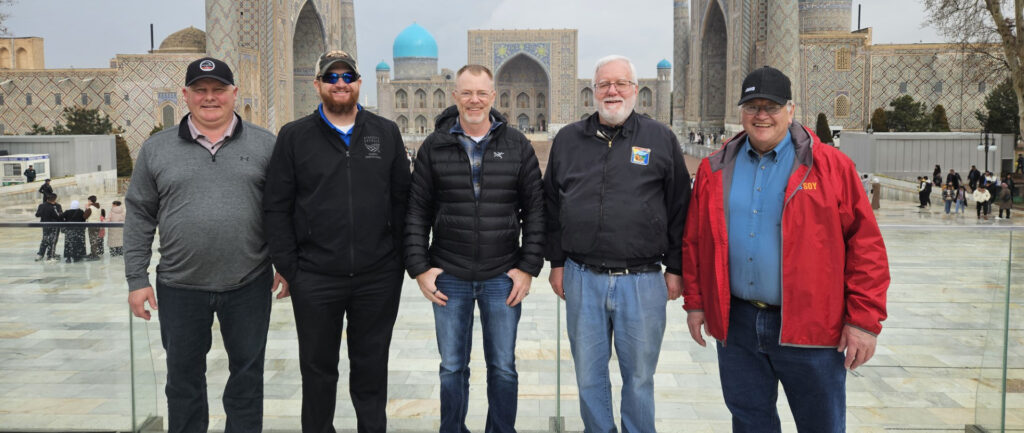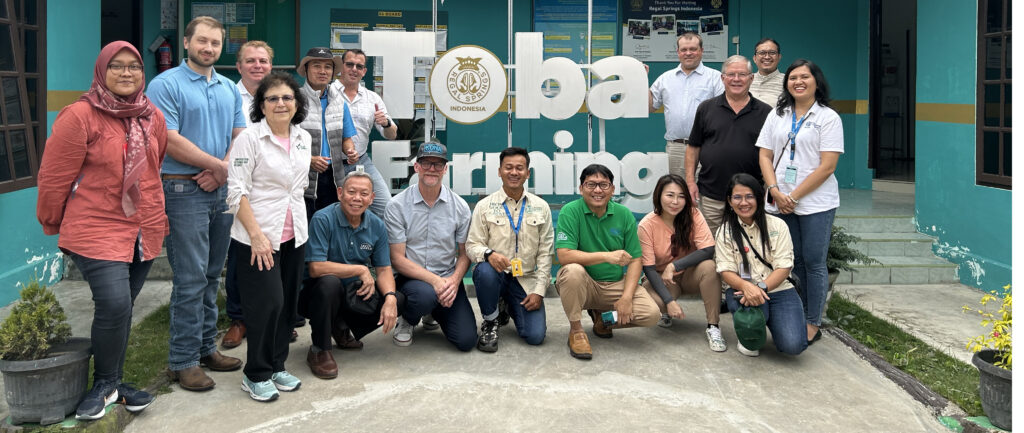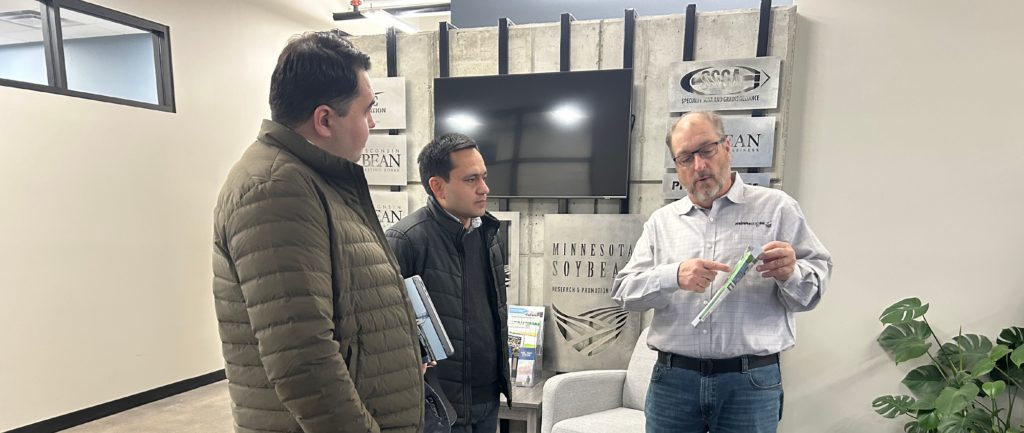For Darin Johnson and others who were part of the delegation of a USDA trade mission to the Philippines, the recent trip was a chance to see just how close the United States is with the southeast Asian nation made up of 7,000 islands.
Johnson, who farms in Faribault County and is vice president of the Minnesota Soybean Growers Association, represented Minnesota soybean farmers with the delegation, joining representatives of the state’s corn and wheat farmers and pork producers, as well as Commissioner Thom Petersen and others from the Minnesota Department of Agriculture.
“We had the opportunity to get out and see the Philippine way of life and how they farm and some of the things they’re trying to implement on their farms,” Johnson said. “They’re interested in American agriculture because they think the way we’re doing it is the right way to do it. They believe in technology and science and, ultimately, they want to protect their food source.”
In all, more than 60 people, representing 29 agribusinesses, farm organizations and state ag departments, made the weeklong overseas trip to the capital city of Manila. Led by USDA Foreign Agriculture Service (FAS) Administrator Daniel Whitley, the trade mission’s goal was to promote two-way cooperation and build trade opportunities between the U.S. and the Philippines.
“The Philippines is an excellent market for U.S. farm and food products, and we look forward to introducing a diverse group of companies and organizations to new export opportunities there,” Whitley said in a statement prior to the trade mission. “U.S. brands sell very well in the Philippines, where consumers regard our products as safe, reliable and of good quality. The United States has enjoyed a long and prosperous trading relationship with the Philippines, and this mission is an ideal opportunity to further expand our exports there.”
The mission included tours, meetings and site visits. During one visit, Petersen, representing the Minnesota Soybean Research & Promotion Council, joined Kentucky and Nebraska in the signing of a Joint Declaration with Hermilando Mandanas, governor of the Philippines province of Batangas, affirming a commitment to work together to increase and strengthen trade relations and opportunities.
Batangas boasts the Philippines second-largest port and brings in, among other products, soybean meal from the United States. Last year, the Philippines – which is about the size of Iowa in terms of arable land with a population of nearly 110 million people –imported just over 2 million metric tons of soybean meal and 123,000 metric tons of whole beans. That’s a 20% increase year over year.
“Our relationship with them is important to the U.S. and them because they know we’re a very reliable source for their soybean meal and the little bit whole beans that they do get from us,” Johnson said. “We’ve really had a seven decades of good trade relationships with them.”
In another visit, Petersen represented the University of Minnesota in the signing of a memorandum of understanding to launch a new project aimed at strengthening local veterinary services for safe pork and pork products. The project, funded by the FAS Emerging Markets Program, Philippine Department of Agriculture technical officials will receive a two-week training in the United States, equipping them with relevant knowledge to conduct workshops across the Philippines to help combat the spread of African Swine Fever.
The Philippines, which has the third-largest economy in southeast Asia after Indonesia and Thailand, is the eighth-largest market for U.S. agricultural products, averaging $3.1 billion annually (overall U.S. exports total $9.3 billion). There is both a need for imported food and food ingredients to keep up with the pace of growth and stave off shortages in the nation of 110 million, as well as a growing middle class that is buying higher-quality foods and has an affinity for products from the United States or products that contain U.S. ingredients.
Johnson and the delegation also had a chance to visit La Filipina Feed Mill, the Cargill-Jollibee poultry plant, MacroAsia Airport Services Corporation, Gardenia break bakery, a wet market and various stores and shopping centers. And, in a cultural tour, the Manila American Cemetery. Located in the heart of Manila, it is the largest American military cemetery outside the U.S., with 17,000 buried and 36,000 missing in action commemorated on the walls from World War II Pacific Operations.
“I was so impressed by the Filipino people,” Johnson said. “They were very respectful and nice to us, and that’s because of the relationship that we’ve had with them for this extended period of time.”







